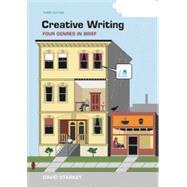Outlining the basics of composing and crafting each genre, Creative Writing: Four Genres in Brief teaches you to write poetry, fiction, nonfiction, and drama through the use of short models in order to get you writing in all genres during a single course.








